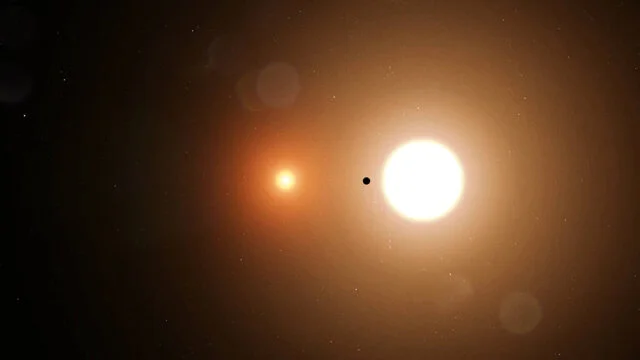
Astronomers Discover Retrograde Planet Orbiting Between Two Stars, Challenging Planetary Formation Theories
In a groundbreaking discovery, astronomers have confirmed the existence of a rare retrograde planet orbiting within a binary star system, challenging our understanding of planetary formation and stability. This unusual configuration, known as ν (nu) Octantis, features a giant planet caught in a gravitational dance between two stars, a scenario previously considered highly improbable. The findings suggest that the universe may harbor a far greater diversity of planetary systems than scientists initially believed.

The story of ν Octantis began over two decades ago when astronomers detected a repeating signal from the binary star system. Initially, there were debates about whether the signal was from the planet or due to stellar activity. Now, researchers have used the High Accuracy Radial Velocity Planet Searcher (HARPS) at the European Southern Observatory to confirm the existence of a planet approximately twice the mass of Jupiter. This planet exhibits a unique retrograde orbit, moving in the opposite direction to the smaller star, a faint white dwarf.
According to Man Hoi Lee at the University of Hong Kong, the retrograde motion of the planet contributes to the system's stability, despite its seemingly precarious position between the two stars. He stated that improved measuring devices, like the HARPS spectrograph, along with years of consistent data helped to confirm the planet’s existence. Lee notes that such consistency would be unlikely if the signal were caused by stellar activity.

The presence of a white dwarf in the system adds further complexity. Models suggest the planet's current orbit wouldn't have been possible when the star was younger and larger. This leads to two main theories about the planet's origin: either it formed from material ejected by the white dwarf during its transformation, or it originally orbited both stars before migrating inward.
The stability of this unique system is also remarkable. The planet's signal has remained consistent for over twenty years, suggesting that its unusual orbit somehow stabilizes it against disruptive gravitational forces from the white dwarf companion. This stability means that this defies conventional planetary formation and survival models.
As Manfred Cuntz at the University of Texas at Arlington noted, the discovery of ν Octantis challenges conventional views of planetary arrangements, inviting scientists to consider a broader range of scenarios for star and planet formation and evolution. The discovery underscores that there is more to discover about planets.
What other surprising planetary systems might be lurking in the cosmos, waiting to be discovered? Share your thoughts and theories in the comments below!